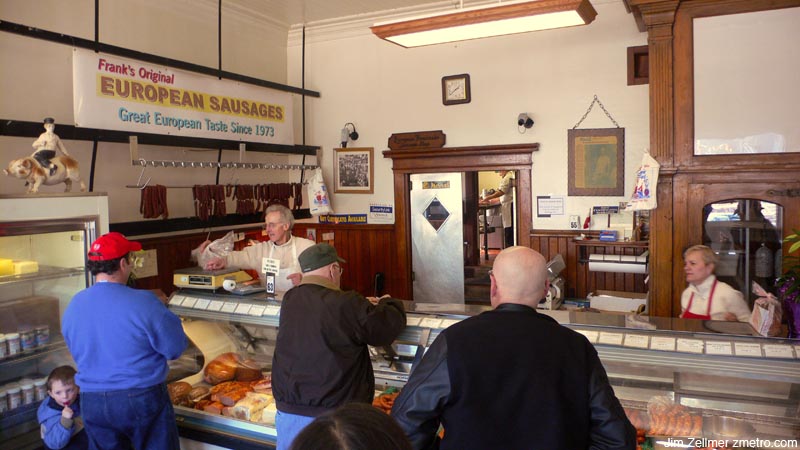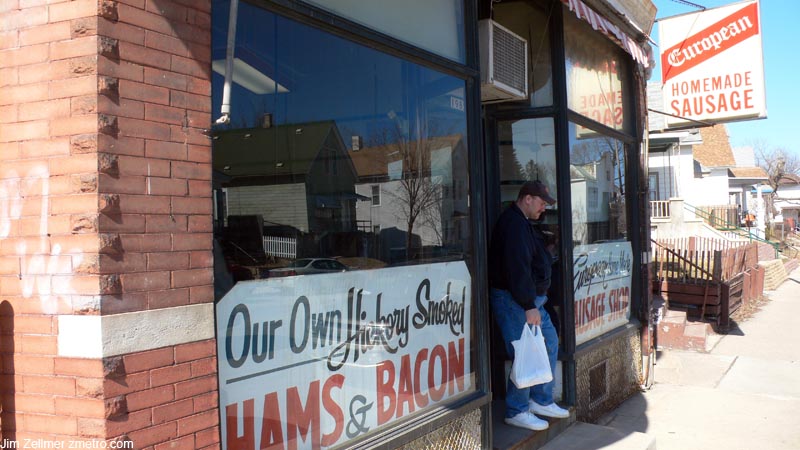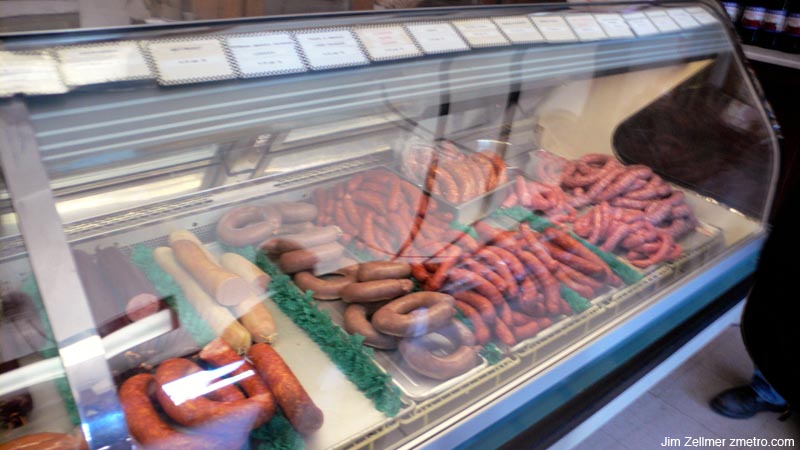Roger O’Neill video takes a look at the Crave Brothers use of methane – from their cow poop – to power the farm and 120 neighboring homes. The farm includes a cheese factory.
Category: Entrepreneurs
Creativity Step by Step: A Conversation with Choreographer Twyla Tharp
The notion that some people are simply born artistic—and that there is a profile that can help organizations identify them—is quite firmly entrenched. All the talk of genetic determination nowadays undoubtedly has a lot to do with that. But the idea that creativity is a predetermined personality trait probably appeals at a psychological level because it gives people an excuse for not innovating or initiating change themselves, reducing the problem of creativity to a recruitment challenge.
Significantly, the people least likely to buy into the idea that creativity is preordained are the creative geniuses themselves. Choreographer Twyla Tharp, for one, doesn’t subscribe to any notion of effortless artistry. As someone who has changed the face of dance, she’s certainly qualified to have an opinion. The winner of a MacArthur fellowship (popularly called “the genius grant”), two Emmy awards, and a Tony award, she has written and directed television programs, created Broadway productions, and choreographed dances for the movies Hair, Ragtime, and Amadeus. Tharp, now 66, did all this while creating more than 130 dances—many of which have become classics—for her own company, the Joffrey Ballet, the New York City Ballet, the Paris Opera Ballet, London’s Royal Ballet, and American Ballet Theatre. The author of two books, she is now in the process of simultaneously developing new ballets for the Miami City Ballet, American Ballet Theatre, and Pacific Northwest Ballet.
At her Manhattan home, Tharp met with HBR senior editor Diane Coutu to discuss what it takes to be a choreographer. In these pages, she shares what she has learned about fostering creativity, initiating change, and firing even top-notch performers when push comes to shove. In her suffer-no-fools way, she talks about her “monomaniacal absorption” with her work and the need to be tough, even ruthless, when that work is at stake. What follows is an edited version of their conversation.
A Superb Easter Ham
Let’s Talk About Your Big But But
My December 31, 2007, blog entry was called What Do You Listen For? I wrote that if you listen for errors and offense, you will find them, but if you listen for truth and meaning, you will find them instead.
How can you tell when someone is not listening for truth and meaning? One sign is the word, “but,” which suggests one has listened only for something to contradict. The Entrepreneurial Investor co-author Dean Zatkowsky calls the expression “yeah, but…” a “reflexive rebuttal,” a knee-jerk need to trump another’s point with one of your own.
The List: The World’s Best Places to Be an Immigrant
Throughout the developed world, countries are tightening up border security, building fences, and raising citizenship requirements. But there are still a few places left that are willing to say: “Give us your huddled masses.”
Wisconsin’s Chocolate Delta
OAKS Candy Corner in Oshkosh is a chocolate mirage.
Its gingerbread exterior yields to an interior that in winter is as sugary warm as the inside of a circus peanut and in summer is as refreshing as a wax Coke bottle. It smells like caramel corn and cocoa butter rubbed into the floorboards with a pair of Red Wing boots. It’s the shop just around the corner in an unremittingly blue-collar part of an unremittingly blue-collar town. It shouldn’t still be there, but there it is.
If Oaks Candy is a mirage, then the Hughes Homaid Chocolate Shop, less than half a mile away, is a figment of Wisconsin’s imagination. An 80-year-old bungalow two blocks from Lake Winnebago, it has only a small neon sign to state its trade and a full-blown candy-making operation in its basement.
But Oshkosh isn’t the only caretaker of these unlikely sweet dreams. There’s Beerntsen’s in Manitowoc, with its plate lunches and ice cream sodas; Wilmar Chocolates in Appleton, with its old-time awnings and row of state-fair prizes on the south wall; Kaap’s in Green Bay, with its jar of jawbreakers on the counter; Seroogy’s in De Pere, with its magical whipped-chocolate-filled “meltaways”; and more, much more.
Eureka! It Really Takes Years of Hard Work
WE’VE all heard the tales of the apple falling on Newton’s head and Archimedes leaping naked from his bath shrieking “Eureka!” Many of us have even heard that eBay was created by a guy who realized that he could help his fiancée sell Pez dispensers online.
The fact that all three of these epiphany stories are pure fiction stops us short. As humans, we want to believe that creativity and innovation come in flashes of pure brilliance, with great thunderclaps and echoing ahas. Innovators and other creative types, we believe, stand apart from the crowd, wielding secrets and magical talents beyond the rest of us.
Balderdash. Epiphany has little to do with either creativity or innovation. Instead, innovation is a slow process of accretion, building small insight upon interesting fact upon tried-and-true process. Just as an oyster wraps layer upon layer of nacre atop an offending piece of sand, ultimately yielding a pearl, innovation percolates within hard work over time.
“The most useful way to think of epiphany is as an occasional bonus of working on tough problems,” explains Scott Berkun in his 2007 book, “The Myths of Innovation.” “Most innovations come without epiphanies, and when powerful moments do happen, little knowledge is granted for how to find the next one. To focus on the magic moments is to miss the point. The goal isn’t the magic moment: it’s the end result of a useful innovation.”
33 Things That Make Us Crazy
Wired on air travel, and 32 other modern annoyance:
Ticket Counter: Expensive? If anything, flying doesn’t cost enough: The average domestic fare in spring 2007 was $326. That’s $50 less than a decade ago, after adjusting for inflation. During the same period, fuel costs nearly tripled. To stay in business, major carriers have aped the strategies of budget operators like Southwest. Largely gone are the free meals, blankets, and pillows. The savings have been passed along as lower ticket prices — at the price of your comfort.
SpaceShipTwo
Virgin Galactic has unveiled a SpaceShipTwo (SS2) design, created by Scaled Composites, that harks back to the NASA/USAF Boeing X-20 Dyna-Soar glider of the 1960s, while Scaled’s carrier aircraft, White Knight II (WK2) has been given a twin-fuselage configuration.
To be launched on a Lockheed Martin Titan III rocket, Dyna-Soar was for hypersonic flight research but the programme was cancelled before the first vehicle was completed. Some of its subsystems were used in later X-15 flight research and Dyna-Soar became a testbed for advanced technologies that contributed to projects, including the Space Shuttle.
How Brazil outfarmed the American farmer
Phil Corzine is not abandoning Illinois. A longtime soybean farmer in Assumption, a small town east of Springfield, he is firmly loyal to his state – he once ran the Illinois Soybean Checkoff Board, a program in which Illinois farmers promote Illinois soybeans. But the 1,300 acres Corzine planted in 2007 are not in Illinois, or even in the Midwest. They’re in central Brazil, in the state of Tocantins, part of a big swath of soy-producing lands that stretch between the Andes and the Atlantic forest and from northern Argentina to the southern flanks of the Amazon basin. Soylandia, as this immense region might be called, is almost entirely unknown to Americans. But it may well be the future of one of the world’s most important industries: grain agriculture.
Mainly out of curiosity, Corzine visited Brazil in 1998. Like most U.S. soy producers, he’d noted Brazil’s rapid rise in the trade – from amateur to global power in the space of a couple of decades. Its scale of operations, however, stunned him. A big farm in Illinois may cover 3,000 acres; spreads in Soylandia are routinely ten times bigger. Conditions there were primitive, Corzine thought, but Soylandia was going to expand in a way that was no longer possible in the U.S. With three partners he raised $1.3 million from more than 90 investors, mostly Midwestern farmers. In Illinois, he says, that kind of money “can’t even buy the equipment, let alone the land.” In Brazil it was enough for Corzine’s group to acquire 3,500 acres in 2004. Since then, the land has almost doubled in value as other American investors clamored to get into Brazilian soy. This year Corzine, now 49, raised another $400,000. “We feel like what’s going on is long-term positive,” he says with Midwestern understatement.


